
Rosyth is a town on the Firth of Forth, three miles south of the centre of Dunfermline. According to the census of 2011, the town has a population of 13,440.
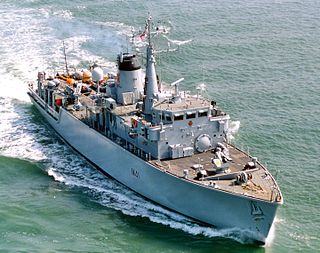
HMS Quorn, the third ship of this name, was a Hunt-class mine countermeasures vessel of the Royal Navy. She was launched on 23 January 1988, as the last ship of her class.

The Hunt class is a class of thirteen mine countermeasure vessels of the Royal Navy. As built, they combined the separate roles of the traditional minesweeper and that of the active minehunter in one hull, but later modifications saw the removal of mine-sweeping equipment. They have a secondary role as offshore patrol vessels.

The Sandown class is a class of fifteen minehunters built primarily for the Royal Navy by Vosper Thornycroft. The Sandown class also serve with the Royal Saudi Navy, the Estonian Navy, and the Ukrainian Navy. The first vessel was commissioned into Royal Navy service on 9 June 1989 and all the British ships are named after coastal towns and cities. They have a secondary role as offshore patrol vessels.

HMS Bangor is a Sandown-class minehunter commissioned by the Royal Navy in 1999. Designed to hunt naval mines in depths of up to 200 m (660 ft) using the Sonar 2093 Variable Depth Sonar (VDS) meaning that she can conduct mine clearance operations throughout the continental shelf. She is named after the Northern Ireland seaside town of the same name, and the second Royal Navy vessel to bear the name.

The Estonian Navy are the unified naval forces among the Estonian Defence Forces.
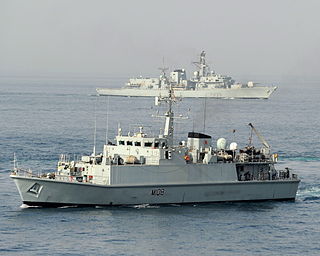
HMS Grimsby was a Sandown-class minehunter of the British Royal Navy, serving from 1999–2022, and the second ship to bear the name.

HMS Pembroke is a Sandown-class minehunter of the Royal Navy. She was the second ship launched of the second batch of the class, which had several improvements over the first five ships built. The ship was posted for three years to the Persian Gulf between 2009 and 2012. Pembroke has since been deployed in international exercises and in historic ordnance detection in home waters. Pembroke was the first of the Royal Navy’s Mine Countermeasures Vessels to be fitted with the Oceanographic Reconnaissance Combat Architecture combat system to replace the previous NAUTIS combat system in early 2020.
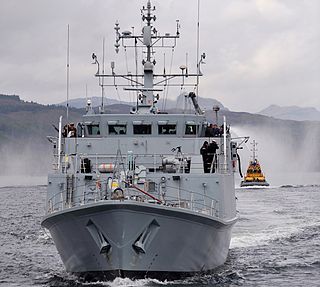
HMS Ramsey was a Sandown-class minehunter of the British Royal Navy. Like other vessels of the Sandown class, Ramsey was built of glass-reinforced plastic and other non-magnetic materials so that her hull does not trigger naval mines as easily as standard warships.

HMS Blyth is a Sandown-class minehunter formerly of the British Royal Navy. She was the second vessel to bear the name. The first being a Bangor-class minesweeper of the Second World War, pennant number J15. The vessel served in the Middle East as part of the 9th Mine Countermeasures Squadron. In 2021, the minehunter was decommissioned and following a refit, planned to be transferred to an unspecified non-European navy.

HMS Shoreham was a Sandown-class minehunter of the British Royal Navy. She was the fifth vessel to bear the name. From 2018 to 2021, Shoreham was deployed at UKNSF Bahrain together with three other mine countermeasures ships as part of 9 Mine Countermeasures Squadron on Operation Kipion. In 2022 she was decommissioned and was transferred to Ukraine.

EMLAdmiral Pitka (A230) was a Beskytteren-class ocean patrol vessel and former flagship of the Estonian Navy, belonging to the Mineships Division. She was named after Estonian Admiral Johan Pitka.

EML Admiral Cowan (M313) is a Sandown-class minehunter. Formerly HMS Sandown, lead ship of her class of the Royal Navy, she is now an Estonian Navy ship. Renamed EML Admiral Cowan, she is the flagship of the Estonian Navy and part of the Estonian Navy's mine sweeping flotilla. Admiral Cowan is the lead vessel of the Estonian Navy Mineships Division and also the first of the three modernised Sandown class minehunters received.
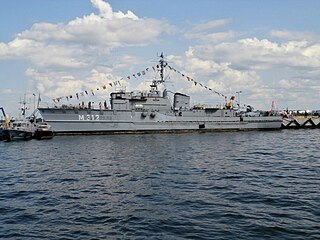
EML Sulev (M312) was a Lindau-class minehunter of the Estonian Navy Mineships Division.

EML Wambola (M311) is a Lindau-class minehunter of the Estonian Navy Mineships Division, formerly the German warship Cuxhaven. The commanding officer of the vessel is Captain Jaanus Antson. The minehunter Wambola is the first vessel of the Estonian Navy Mineships Division and also the first modernized Lindau-class minehunter. A black keel on a silver background with a golden battle-axe is on the coat of arms of the vessel. The battle-axe is a weapon used by the ancient Estonians which also symbolizes their fighting spirit and strength. The ships motto is the Latin "Ad unquem" which is in English "Onto the nail head". The coat of arms was designed by Priit Herodes. In 2000 a cooperation contract was signed between the Pärnu city council and the minehunter Wambola which gave the vessel a right to wear the Pärnu town coat of arms and to introduce the city in all foreign harbors across the world.
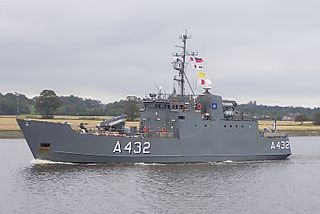
EML Tasuja (A432) was a Lindormen-class diving vessel built in 1977. She served in the Danish Navy as KDM Lindormen until 2004. Handed over to the Estonian Navy, she was commissioned as EML Tasuja in the Mineships Division until 2016.

EMLKalev (M414) was a Frauenlob-class minesweeper of the Estonian Navy, which belonged to the Mineships Division.
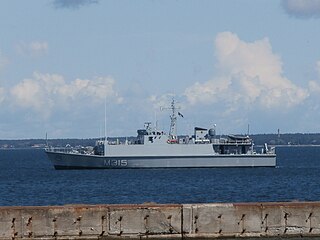
EML Ugandi is a Sandown-class minehunter commissioned by the Estonian Navy in 2009. Ugandi is a former British Royal Navy vessel HMS Bridport built by Woolston Yard of Southampton-based shipbuilders Vosper Thornycroft.
Two ships of the Royal Navy have borne the name HMS Inverness:
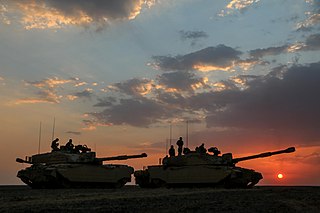
Exercise Saif Sareea is a series of military exercises undertaken by the United Kingdom and Oman which first began in 1986 and most recently took place in 2018.



















